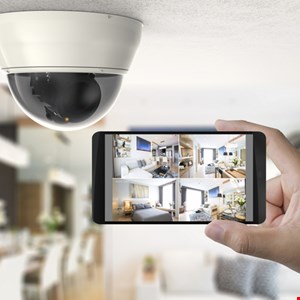Taking a snapshot of your Android phone’s screen is easy, and there are all sorts of situations where a screenshot could come in handy, whether you want to share your home screen with friends or obtain pictorial proof of your latest high score.
This guide covers the latest Samsung Galaxy S20 and Note 10 Plus, though previous models will follow similar procedures. We’ve also included a guide to taking a screenshot on any other device using the most up-to-date Android 10 software, to the older Android 4.0 Ice Cream Sandwich.
How to take a screenshot on a Galaxy device by swiping the screen
Taking a screenshot on the Galaxy Note 10 Plus — or almost any other Galaxy phone — can be done with the swipe of a hand!
- Set your hand vertically on either side of the screen, and shape it like you are karate-chopping the phone.
- Horizontally swipe across the screen like your hand is a photo scanner.
- You should feel a vibration, see a screenshot animation brighten the screen, and receive a notification that a picture has been saved to the gallery.
- It may take a few tries, but practice makes perfect.
This technique works with Samsung phones that came out after 2013 including the Galaxy S4.
How to check if ‘Palm swipe to capture’ is enabled on your Galaxy
If you can’t get it to work, you may have to enable the swipe feature in Settings. The following is demoed on a device running Android 10, so older models may show slight variation.
- Open Settings > Advanced features > Motion and gestures.
- Tick the Palm swipe to capture box.
- Close the menu and find the screen you want to capture.
- Enjoy!
Further reading
How to take a screenshot using a button shortcut
Not everyone is a fan of gesture controls. Thankfully, most Android phones offer a more tactile method for capturing a screenshot.
- Press the Power and Home buttons at the same time.
- Hold both buttons for a second, until you feel a vibration or see a visual indicating a picture has been taken.
- This can be awkward to get right. You need to hold the Power button slightly before pressing the Home button, then hold them both down.
This technique works with pretty much any Samsung phone that has a front Home button.
If you have a Galaxy S20, Galaxy S10, or Galaxy Note 10, which don’t have a physical Home button, then the key combination is a little different:
- Press and hold the Power and Volume down buttons at the same time.
- Hold both buttons for a second, until you hear a shutter sound or see a visual indicating a picture has been taken.
- You need to hold the Power button slightly before pressing the Volume down button, then hold them both down.
How to take a screenshot on a Note using the S Pen

This technique is available on the Galaxy Note 10 Plus and other Samsung devices with an S Pen. To take a screenshot this way, you have to open the Air Command menu, which you can do by pulling out the S Pen stylus, or by hovering the pen over the screen and clicking the button on it.
- Select Screen Write from the Air Command options to take a screenshot.
- You can then write notes on top of the image. There are options in the top toolbar to change your pen color and size if you want to get creative. You can also erase or undo strokes and there is a Crop option at the bottom.
- When you’re finished, tap Share or Save at the bottom.
How to take a screenshot on any other Android device
Taking a screenshot on any other Android phone or tablet — as in, one that is not a Samsung device — is also pretty easy. The method varies slightly from one model to the next, however, the following method should work on all non-Samsung Android phones running Android 4.0 Ice Cream Sandwich or later.
- Press the Power button and Volume down key at the same time.
- Hold them down until you hear an audible click or a screenshot sound. You should also see a small capture animation.
- Along with the audible click, you’ll also get a notification about the screenshot. Most Android smartphones give you the option to immediately edit or crop the screenshot too.
- If you go looking for it later, you’ll have to dig through the Gallery or Photos app on your phone. Keep in mind that screenshots end up in their own separate folder, not the camera roll.
In Android 10, you can also press and hold the Power button to get a Screenshot option to pop up on screen. If you choose to edit the screenshot from the notification bar you’ll also find that you can mark it up, which is ideal if you want to highlight something specific.
For ancient Android phones, such as those running 2.3 Gingerbread, you need to head over to the Google Play Store, where there are several apps that will capture a screenshot on your behalf. Screenshot Easy is a popular choice but may require you to root your phone. You can also take a look at No Root Screenshot It if you don’t want to root your device.
Editors’ Recommendations




















![LinkedIn Launches ‘Healthcare Hub’ to Help Health Sector Marketers Maximize Opportunities [Infographic]](https://www.socialmediatoday.com/user_media/cache/22/b5/22b53b1b4fb34661ac7ae846927a04ad.jpg)



